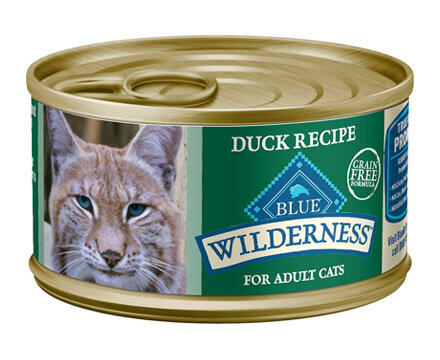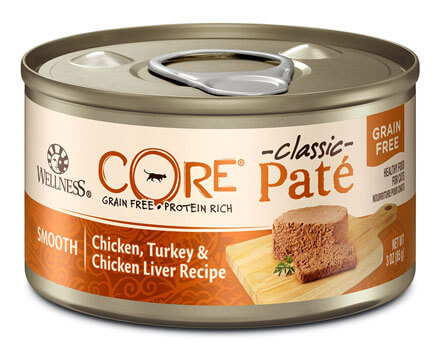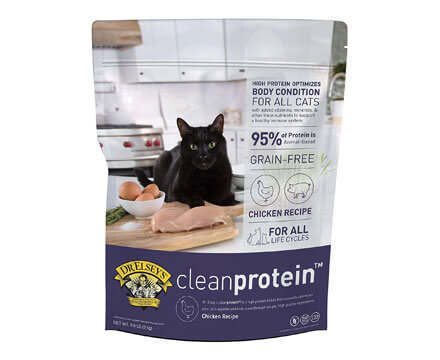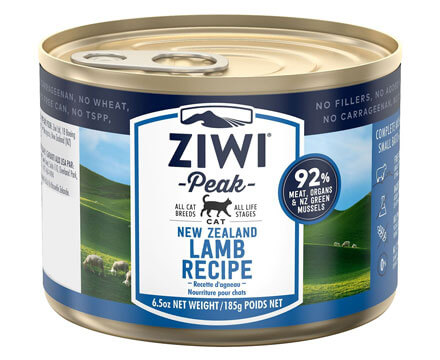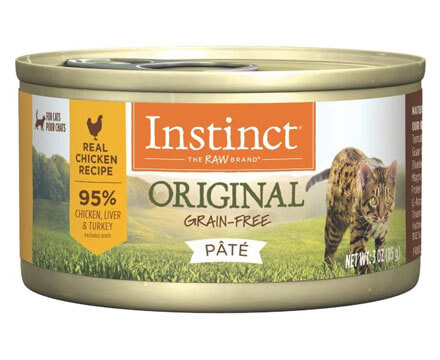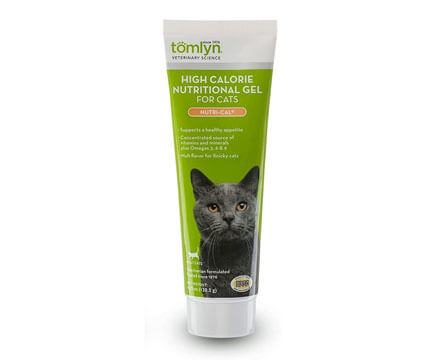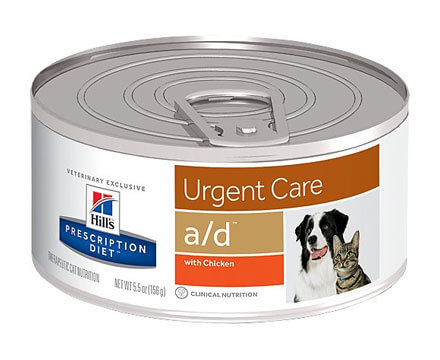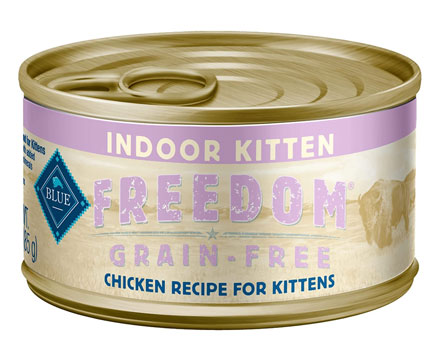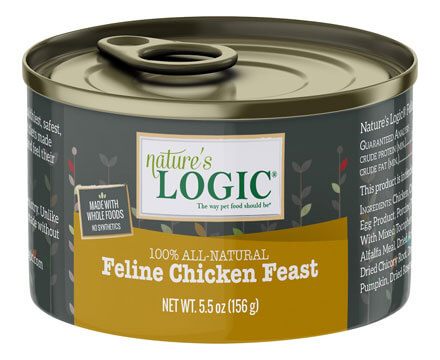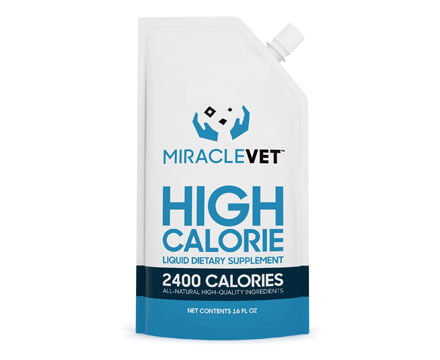The Best High Calorie Cat Food for the Underweight Feline
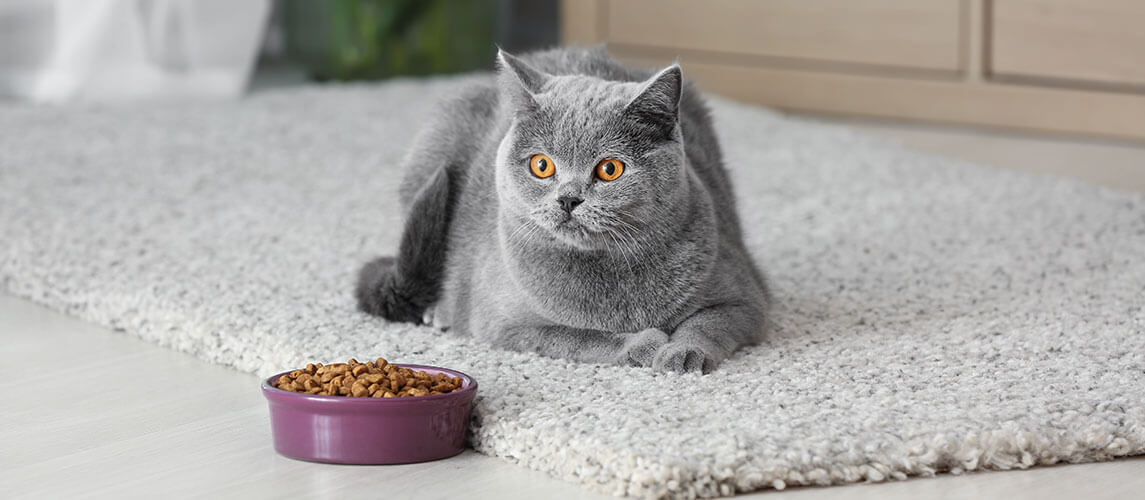
- Key Takeaways
- 1. Blue Buffalo Wilderness Duck Grain-Free Canned Cat Food
- 2. Wellness CORE Classic Chicken Turkey & Chicken Liver Pate
- 3. Dr. Elsey’s Cleanprotein Grain-Free Dry Cat Food
- 4. Ziwi Peak Lamb Recipe Canned Cat Food
- 5. Instinct Original Grain-Free Pate Real Chicken Recipe
- 6. Tomlyn Nutri-Cal Gel High Calorie Supplement for Cats
- 7. Hill’s Prescription Diet a/d Urgent Care Canned Cat Food
- 8. Blue Buffalo Freedom Indoor Kitten Canned Food
- 9. Nature’s Logic Feline Chicken Feast Grain-Free Cat Food
- 10. Miracle Vet High Calorie Weight Gainer
Cats are known to expect the best when it comes to the contents of their food bowl. But if your cat struggles to put on weight, or has lost condition due to health or age, then a special high-calorie diet is the route you should look to take.
Made with energy-rich ingredients as well as optimized for nutrition, a good quality, high-calorie cat food can make all the difference to your kit’s weight, overall health, and wellbeing.
So, if you are looking to help your feline friend maintain a healthy weight while ensuring they get all the nutrition they need, read on. We review some of the best high-calorie cat food for your kit to get their teeth into.
Key Takeaways
- A cat at a normal weight will be sleek and athletic, and you should just be able to feel the natural ‘ripple’ of their ribs and spine.
- If you can clearly feel their ribs and spine and there’s little flesh under their skin, your kit may be underweight.
- Age, health, stress, dental issues, and parasites are just some of the main causes of weight loss in cats.
- High-calorie, nutritionally balanced cat foods that contain quality animal protein as the main ingredient are a good way to help your cat gain weight.
- Always consult your vet if your pet rapidly loses body condition or if you are in any way concerned about your cat’s weight loss.
The Best High-Calorie Cat Food
1. Blue Buffalo Wilderness Duck Grain-Free Canned Cat Food
Key Features
Brand: Blue Buffalo
Allergens: none noted
First 5 ingredients: duck, turkey broth, chicken liver, potatoes, natural flavor
Primary Proteins: duck
Calories: 128 kcal/can
Flavor: duck
Type: wet food
Life Stage: adult
With this high-calorie pate, Blue Buffalo has come up with well-priced cat food that’s protein-rich with all the essential nutrients your pet needs to sustain good health. And, as it’s grain-free, this is an excellent high-calorie recipe to help a sensitive cat gain weight. However, it does contain the additive carrageen, which some cat owners may prefer to avoid.
With duck as its number one ingredient, the formula is more of a firm pate, but it does have an appealing texture and meaty taste. It is also limited to carbs and contains no by-product meals, corn, soy, or artificial ingredients—an excellent, affordable, all-round high-energy cat food for adult felines.
Pros
Uses quality duck for a rich, natural flavor
Grain, soy and by-product meal free so good for more diet-sensitive cats
Cons
Does contain the food additive, carrageen
2. Wellness CORE Classic Chicken Turkey & Chicken Liver Pate
Key Features
Brand: Wellness
Allergens: none noted
First 5 ingredients: chicken, turkey, chicken broth, chicken liver, chicken meal
Primary Proteins: chicken, turkey
Calories: 101 kcal/can
Flavor: chicken
Type: wet
Life Stage: adult
While most wet cat foods contain around 8-10% protein, Wellness CORE Classic comes in at a minimum of 12%. And this protein hit makes this pate our best protein-rich pick. With chicken, turkey, and chicken liver, this delicious-tasting wet cat food will tempt your underweight cat back to their bowl. And the soft texture makes it a delight for even very senior kits to eat. Nutrient-dense, CORE Classic pate also ensures your pet gets all the premium nutrition they need for their health while supporting lean muscles and helping to maintain their weight.
The moist, grain-free, and low phosphorus wet canned cat food is also a good choice for cats with urinary issues as it can help keep them hydrated. However, some cat owners do report the pate is on the sticky side, so you may need to add some kibble if your cat prefers more texture.
Pros
High protein to support lean muscles and energy release
Low phosphorus so can be used for cats with urinary issues
Cons
Texture is smooth and sticky so may not be the choice for some kits
3. Dr. Elsey’s Cleanprotein Grain-Free Dry Cat Food
Key Features
Brand: Dr Elsey’s
Allergens: dried egg
First 5 ingredients: chicken, dried egg product, pork protein isolate, gelatin, chicken fat
Primary Proteins: chicken
Calories: 554 kcal/cup
Flavor: chicken
Type: dry food
Life Stage: adult
Coming in at 554 calories per cup, CleanProtein is a calorific dry food that uses minimal carbs for sustained energy release. Grain-free and with whole premium chicken as its number one protein, CleanProtein also means your cat doesn’t need to sacrifice taste.
Dr. Elsey’s calorie and protein-rich recipe mimic the natural diet to boost both their appetite and body mass. Meanwhile, carefully balanced vitamins and minerals, including taurine, omega fatty acids, and vitamins B, D, and E, work to promote a healthy, active body. This dry cat food formula is also low in oxalate to help prevent bladder crystals and stones. CleanProtein is a good high-calorie food choice if your cat is underweight, has health conditions such as diabetes or bladder stones, has lost their appetite, or needs extra support to maintain their energy and body condition.
Pros
Low-glycemic recipe helps to sustain energy and build body mass
Free of fillers, grain, and gluten
Cons
The high calories and protein levels can cause temporary stomach upset
Needs portion control or can lead to excess weight, especially in obese cats
4. Ziwi Peak Lamb Recipe Canned Cat Food
Key Features
Brand: Ziwi Peak
Allergens: none noted
First 5 ingredients: lamb, water sufficient for processing, lamb lung, lamb kidney, lamb liver
Primary Proteins: lamb
Calories: 113 kcal/can
Flavor: Lamb
Type: wet food
Life Stage: all
If you want to feed your cat sustainably but still need to give them a quality, high-calorie diet, try this lamb canned cat food from Ziwi Peak.
Designed to mirror a whole prey diet, this rich recipe uses whole meat, including organs and bones, for a powerful nutrient punch. The New Zealand lamb used as the single protein is free-range and ethically sourced. You also get green-lipped mussels which are a good source of chondroitin and glucosamine for healthy joints.
We like that this moist cat food is free from carrageenan and BPAs, which can be included in the canning process. The result is a high-calorie, protein-rich recipe with minimal carbs, which boosts body condition and energy while helping to maintain a cat’s healthy weight.
Pros
Uses free range lamb including organs and bones as its protein source
Limited carb recipe that is grain, filler and carrageenan free
Cons
With such quality ingredients, this cat food does come at a premium price
5. Instinct Original Grain-Free Pate Real Chicken Recipe
Key Features
Brand: Instinct
Allergens: peas, egg product, tomato
First 5 ingredients: chicken, turkey, chicken liver, chicken broth, ground flaxseed
Primary Proteins: chicken
Calories: 115 kcal/can
Flavor: chicken
Type: wet food
Life Stage: adult
Some cats can be sensitive to what you put in their food bowl, with grain-based ingredients often irritating their system. So, if you have a sensitive, underweight cat or need a high-calorie diet to maintain their condition, then Instinct Original Grain-Free Pate could be the solution.
This recipe is made with 95% cage-free chicken and turkey and chicken liver to boost muscle condition and sustain your kit’s energy levels. The formula is completed with select fruits and vegetables with zero grain to create a moist pâté that’s tasty to eat. Boosted by essential vitamins and minerals, this wet cat food also contains a healthy dose of omega fatty acids to leave your cat’s coat in tip-top condition.
Pros
Protein-rich, moist formula that is easy to eat and digest
Free from grain, potato, corn, wheat, soy, or artificial colors
Cons
At 7.5%, the fat in this recipe is on the high side
6. Tomlyn Nutri-Cal Gel High Calorie Supplement for Cats
Key Features
Brand: Tomlyn
Allergens: none noted
First 5 ingredients: corn syrup, soybean oil, malt syrup, cod liver oil, cane molasses
Primary Proteins:
Calories: 28 kcal/teaspoon
Flavor: n/a
Type: supplement
Life Stage: all
Sometimes your cat’s diet needs a temporary energy boost, which is where Tomlyn Nutri-Cal High-Calorie Dietary Cat Supplement comes in. This supplement is ideal for picky eaters who refuse their food more than usual or cats recuperating after an operation or illness.
Designed to boost their calorie intake and ensure they are getting sufficient vitamins and minerals, this high-energy supplement comes in an easy-to-dispense tube. Add the recommended daily dose to your kit’s paw or under their nose, and they will naturally lick it, digesting all its goodness.
Use as an appetite stimulant or to boost their calorie intake, this high taste gel supplement is a good option as a weight gainer for cats struggling to eat or maintain body condition. It also ensures they get the nutrient essentials such as omega fatty acids, energy-boosting carbs, vitamins, and minerals.
Pros
High taste formula acts as a short-term booster for underweight or poorly cats
Easy to dispense with a palatable texture
Cons
The gel-like texture may not be to every cat’s taste
7. Hill’s Prescription Diet a/d Urgent Care Canned Cat Food
Key Features
Brand: Hill’s Prescription
Allergens: egg
First 5 ingredients: water, turkey liver, pork liver, chicken, turkey heart
Primary Proteins: turkey, pork, chicken
Calories: 180 kcal/can
Flavor: chicken
Type: wet food
Life Stage: adult
Senior cats can struggle with weight, while health or eating issues can diminish their condition. So, putting your senior pet on a balanced, calorific, and nutritionally balanced diet can support their health and energy.
Designed for post-illness or senior cats, this moist pate from Hill’s Prescription Diet features highly digestible ingredients that won’t irritate their system. With extra calories to help your old cat heal and maintain their health, the core protein in this recipe is nutritious chicken, boosted by fish oil and chicken liver flavor. And the soft consistency means you can also feed it via spoon, syringe, or feeding tube. You will need vet authorization for this product, but it’s worth it.
Pros
Digestible formula can be fed to older or sick cats in a variety of ways
Delicious chicken to stimulate their appetite
Cons
You need to get a vet to authorize this for your cat
As a quality product, it is on the expensive side
8. Blue Buffalo Freedom Indoor Kitten Canned Food
Key Features
Brand: Blue Buffalo
Allergens: sweet potato
First 5 ingredients: chicken, chicken liver, chicken broth, carrots, sweet potatoes
Primary Proteins: chicken
Calories: 116 kcal/can
Flavor: chicken
Type: wet food
Life Stage: kitten
Giving your kit the best start in life is the priority of any pet owner, so if your kitten is struggling with their weight, Blue Buffalo’s Indoor Kitten cat food is worth considering. Grain-free and with natural ingredients, the pate formula is enticing and easy for your little one to eat. Quality chicken is the protein source, boosted by selected fruits and vegetables and fortified with the vitamins and minerals your kitten needs to grow and develop.
This chicken recipe is formulated with DHA, an essential fatty acid found in a mother cat’s milk, as a high-calorie kitten food. This means this canned food supports your fur baby’s eye, brain, and cognitive function. The result is an age-appropriate high-calorie kitten food that works to sustain your kitten’s growth, development, and body condition while supporting the energy levels they need to thrive.
Pros
Easy to eat wet kitten food that’s grain free and calorie/nutrient rich
Added DHA for brain and eye development
Cons
Contains carrageenan and guar gum
9. Nature’s Logic Feline Chicken Feast Grain-Free Cat Food
Key Features
Brand: Nature’s Logic
Allergens: egg,
First 5 ingredients: chicken, chicken broth, chicken liver, chicken heart, dried egg product
Primary Proteins: chicken
Calories: 230 kcal/can
Flavor: chicken
Type: wet food
Life Stage: adult
Natural, grain-free, and low carb, Nature’s Logic Feline Chicken Feast is a premium high-calorie food that ticks the boxes. Made with 100% whole chicken and free from the most common ingredients that can irritate, this canned food is perfect for cats of all life stages, including nursing cats. And as it includes organ and muscle meat, the protein is a natural source of taurine for their heart, eye, digestive health, and immune system.
With a high-calorie count of 230 kcals per can, Feline Chicken Feast has a rich taste to tempt your cat and the energy and nutrient supplies they need to boost and maintain their health and weight.
Pros
Can be fed to underweight cats at all the life stages
Natural source of taurine for eye, heart, and immune system
Cons
Recipe contains some ‘curveball’ ingredients such as artichoke and broccoli
10. Miracle Vet High Calorie Weight Gainer
Key Features
Brand: Miracle Vet
Allergens: none noted
First 5 ingredients: omega fish oil, canola oil, purified water, dextrose, whey protein
Primary Proteins: fish, whey
Calories: 150 kcal/ounce
Flavor: natural vanilla
Type: supplement
Life Stage: all
It would help if you used Miracle Vet’s High-Calorie weight gainer to boost your underweight cat’s diet. The liquid formula is easy to add to their regular diet and requires no preparation. As a short-term solution, this weight gainer is a useful aid in addition to your cat’s food and means you don’t have to switch them onto an unfamiliar diet.
Fish oil is the number one ingredient to give a quality fat-based calorie boost without bad fats. And each ounce contains 150 calories, so you can tailor the dosage to help your cat gain weight safely. Add in 29 vitamins and minerals, and Miracle Vet’s natural high-calorie supplement is an excellent way to support the nutritional needs of an out-of-condition feline, older cat, or a recuperating pet.
Pros
An excellent calorie booster for sick, underweight or rescue cats
Cons
Users do report that it has a strong smell
How to Choose The Best Cat Food For Weight Gain
If you are concerned about your cat’s weight, then along with a vet check, switching to high calorie cat foods is a good route to take. We look at what may be causing your cat’s weight loss and how to choose the best weight gain diet.
First of all, Is Your Cat Underweight?
Before you opt for specific cat food for weight gain, you need to make sure it is appropriate for your pet. And that means determining whether your cat is actually underweight. Ideally, your cat should be sleek with an athletic body but this normal shape may not always be immediately obvious depending on their breed or coat type.
Knowing the typical weight for your cat breed is a good place to start as you can quickly monitor them if you suspect there has been too much weight loss. There are also some physical checks you can do. To evaluate whether your cat is underweight, you should assess the following:
-
Their Ribs
Run your hand over your cat’s side. In a healthy cat, you should feel a natural ‘ripple’ of their ribs, but it shouldn’t be too pronounced. You should also be able to feel some soft flesh between the rib cage and skin. If you can feel too much rib and little or no flesh, then your cat is under its normal weight.
-
Their Spine
Now run your hand down the full length of your kit’s spine. You should be able to feel the vertebrae but not too much bone. If your cat’s spine feels very knobbly or there’s no discernible flesh between their vertebrae and skin, then it’s likely that your cat is underweight.
-
Their Skin
While a cat’s skin gets looser with age, in a healthy adult cat their fur and skin should wrap their body neatly, and tuck in closely against their undercarriage. So, if your cat has skin that feels excessively loose, with little fat underneath, their weight has become an issue you need to address.
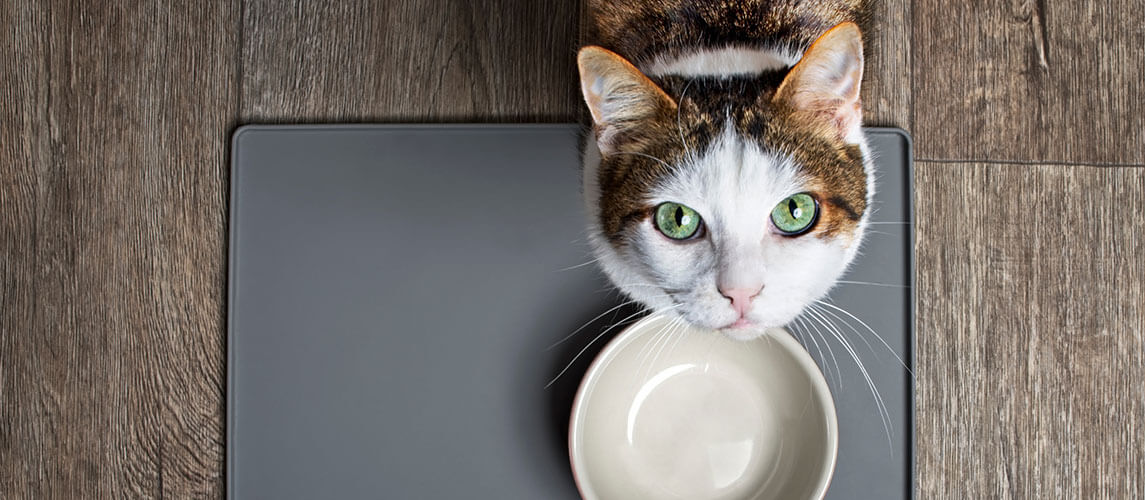
What are the Most Common Causes for Underweight in Cats?
With the average weight of a domestic cat around 10 pounds, even a pound underweight can be a significant loss. And if your cat has lost more than 10% of their healthy body weight, this should be a cause for concern. There are numerous reasons why your cat may be losing weight or be unable to put weight on so if you are worried or the weight loss has been rapid, then a visit to the veterinarian is the best thing to do.
But to help you understand what may be going on, here are the most common causes of unintentional weight loss in cats.
-
Old Age
As cats age they tend to lose their muscle mass and start to look a little scrawny – this is known as sarcopenia. This reduction in body condition is most likely because senior cats are not as efficient in metabolizing their food, so can’t store the energy as well.
-
Younger Cats
Kittens require more calories than adult cats as they are growing and developing so need all the energy their diet should provide. So, if a kitten is being fed a poor diet or insufficient quantities of food to support their development, they can experience weight loss.
-
Underlying Health Issues
If your cat is underweight, especially if the weight loss is sudden, then an underlying health issue could be the root cause. The most common health reasons for feline weight loss include diabetes, an overactive thyroid (hyperthyroidism), chronic kidney disease, gum disease, and cancer. Some viruses as well as neurologic or central nervous system disorders can also cause your sick cat to shed weight.
-
Stress or Anxiety
Anxiety, stress, or depression can reduce your cat’s appetite or cause them to avoid their food bowl. Issues such as whisker fatigue or competition from other cats who may be bullying your pet or stealing their food can also lead to weight loss due to insufficient calorie intake.
-
Intestinal Parasites
Certain parasitic infections such as intestinal worms can cause gastro infections or distress, which may lead to unexpected weight loss. If you suspect parasites, keep an eye out for other symptoms such as diarrhea, bloating, or vomiting, and always ensure your cat’s worming program is up to date.
What is High-Calorie Cat Food?
As well as seeking veterinary advice, switching your underweight cat to a high-calorie diet is a good way to help cats gain weight.
High-calorie cat food is not as simple as looking for a high number of calories in a recipe, as you need to ensure these calories are coming from the very best sources. And the core ingredient to any high-calorie cat food is quality animal protein.
Not only will a good source of animal protein add the calories and energy your cat needs but the amino acids will also support their muscle condition. Animal protein in more calorific foods also provides the right fats as well as micronutrients your carnivore cat needs for good health. However, you should avoid a calorie-rich cat food that includes excessive carbs as your cat is not very efficient at processing carbohydrates so won’t necessarily gain weight.
Why You Should Put Your Cat on High-Calorie Diet
Your cat should have the body condition and energy levels to be an active and happy cat at every life stage. So, maintaining their weight is not just about how they look but also how healthy they are on the inside.
After ruling out any underlying health conditions, a cat that's struggling to maintain body weight should be given an appropriate high-calorie diet to gain weight. A high-calorie diet for weight gain contains higher levels of fat and protein than ordinary cat food to help your pet to gain weight. But it's important to ensure the cat food is also nutritionally balanced, so your pet is getting all the essential nutrients, vitamins, and minerals they need for good all-round health.
High-calorie products can be used short-term, for example after a period of illness to bring your pet back up to their optimum weight. Alternatively, for underweight cats who struggle to keep on weight due to their age or are picky eaters, a high-calorie diet can be used long-term to ensure your cat can gain weight then maintain a healthy body condition.
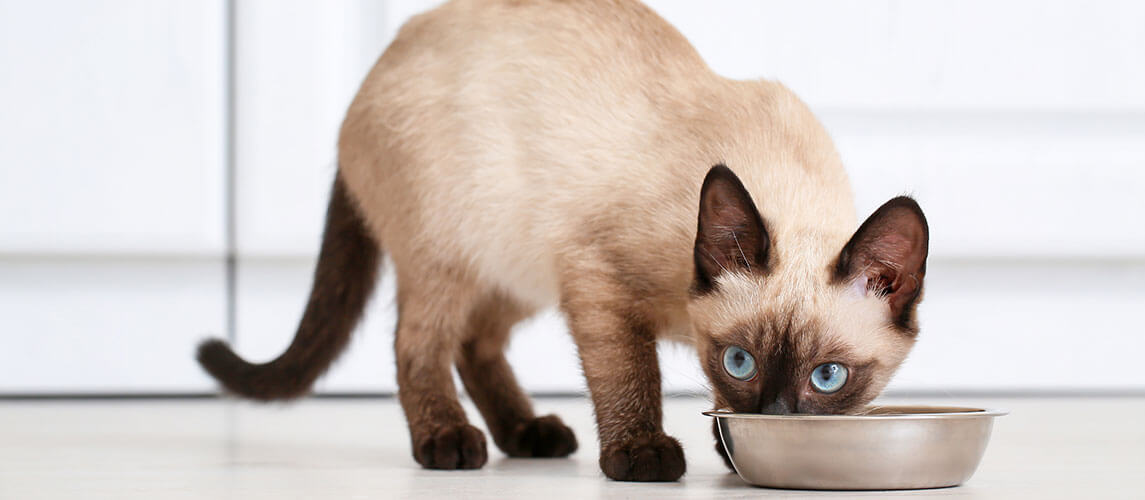
What to Consider When Buying High-Calorie Cat Food
If you are concerned about your cat’s weight, a trip to the vet is always advised. As well as appropriate treatment, your veterinarian may also advise putting your pet onto high-calorie food for weight gain. Here are the main things to consider when buying cat food with higher calories:
-
Protein
The cat food must have a high-quality protein from an animal source as its number one ingredient. Protein is needed by your underweight cat to support lean muscle mass.
-
Carbohydrates
Any carb included in the recipe should be cat appropriate. And avoid any cat foods that have excessive carbs as fillers to boost the calorific value.
-
Fiber
Your cat needs to be able to digest their food easily so look for a source of fiber that will help to maintain healthy digestion.
-
Nutritionally Balanced
As well as calories, your underweight cat needs all those essential vitamins and minerals for energy, immune system support, and good health.
-
Non-Allergenic
The last thing you want for your underweight pet is a negative reaction to their cat foods. Ensuring their diet is safe with ingredients that are appropriate for your cat, especially if they have known food allergies, will help prevent digestive issues which could put them off their food.
-
Your Cat’s Specific Needs
If your cat has an underlying health issue that is contributing to their weight loss, then you need to ensure the high-calorie cat food is appropriate to their specific dietary needs while supporting weight gain. Cats with chronic kidney disease, for example, also need a diet that is also low in phosphorus.
-
It’s Appetizing
Many underweight cats also experience a loss in appetite, so the best food for weight gain in cats should also look, smell, and taste good and also have a texture that is appealing for them to eat.
Sources:
- Hilary Parker (Reviewed by Amy Flowers, DVM), Unexplained, sudden weight loss in cats, Pets WebMD
- Ryan Corrigan, LVT, VTS-EVN, How to Assess Your Cat's Weight, WikiHow

